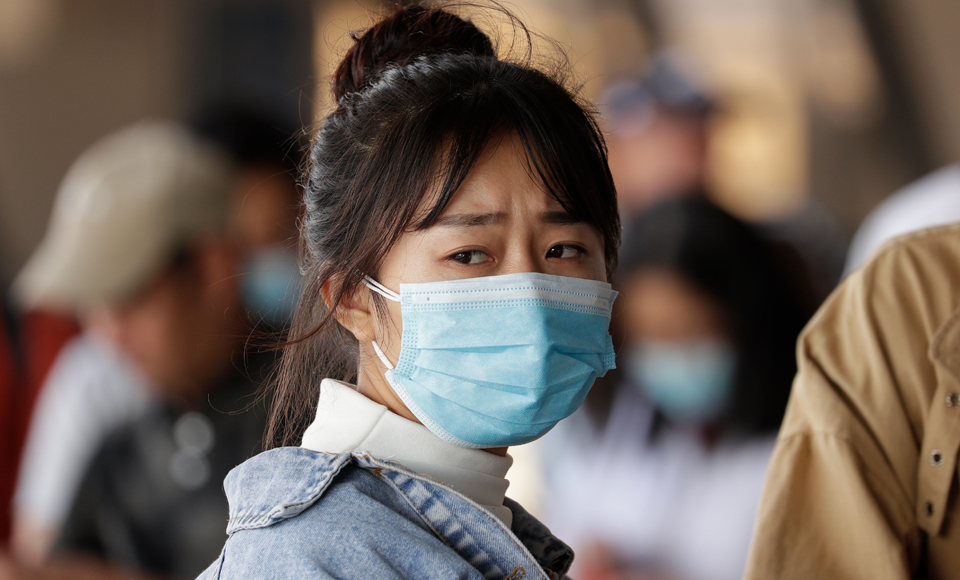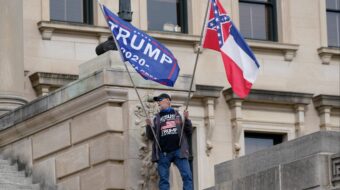
Even though a tiny number of cases of coronavirus have surfaced in the U.S., widespread panic about the disease has surfaced in the form of hostility and racism toward Chinese people and even people who seem to be of Asian descent who are not Chinese. Many Americans, often self-identified as fans of Trump and living in places with no reported cases of the virus, likewise appear to harbor xenophobia and racism.
Fueled by currents of racism and hostility toward immigrants and people who are not what the dominant culture defines as a “prototypical” citizen, this wave of racist panic has prompted Asian people across the U.S. to reach out on social media to report incidents of xenophobia, racism, and even violence.
Cultural competence researcher Ingrid Piller defines the “prototypical” citizen as the fabricated image of a person whose identification with a country’s dominant idea of who is a citizen appears normal and seldom challenged. Thus, while many Asian Americans’ ancestors migrated to the U.S. well before the waves of European immigration of the late 19th century and early 20th century, because they appear not to fit the white, Christian, European-descended profile of the “prototypical” citizen, Americans habitually and unfairly profile them as foreign.
News reports detailed a tweet circulated by the UC Berkeley health service, which characterized xenophobia as a “normal” response to fears about contagious diseases. Only after a “flood” of complaints from the campus community did the Berkeley administration remove and apologize for the tweet.
According to a Los Angeles Times report this week, many Americans of Asian descent, not confined to a Chinese origin, have complained of hostile comments from airline security officials, restaurant servers and customers, university students and professors, random people on public transportation, and anonymous commenters on social media.
Similar reports of intimidating interactions targeting Asian-descended people in grocery stores and other businesses appeared on National Public Radio and in Business Insider. A story published in the latter this week examined social media for a variety of false and offensive conspiracy theories about the origin of the disease that range from a doctored video of people eating bats to fabricated claims that the virus originated from the Huawei 5G network.
Many Asians and Asian Americans took to social media with the hashtag #imnotavirus in protest against racist xenophobia.
The wave of false and inflammatory information and hostile gestures targeting Asian people in the U.S. emerged largely after the Trump administration declared a “state of emergency” and adopted restrictions on travel to and from China. The travel restrictions came after the World Health Organization released a health advisory that urged education and precaution, but concluded: “WHO advises against the application of any restrictions of international traffic based on the information currently available on this event.”
The Trump administration’s “state of emergency” should be regarded as a piece of more substantial and systematic hostility in its relations with China. This stance sparked a trade war and confrontational military actions in the South Pacific. Out of a racist and fascist playbook, the Trump administration frames its foreign and domestic policies in white nationalist terms, denigrating Americans of color and the world’s non-white people.
On a recent program, right-wing radio talk show host Rush Limbaugh spurred on xenophobia by blaming “Chi-coms,” a slur on Chinese people and China, for the disease and demanded additional restrictions and bans on Chinese travelers, according to USA Today. Limbaugh has a faithful following of 27 million listeners who are generally Trump supporters. He was just awarded the Presidential Medal of Freedom by Trump at the State of the Union address.
A Time magazine report this week also linked American racist and xenophobic responses to the coronavirus with similar reactions to the H1N1 virus in 2009 and the Ebola virus in 2014. In those instances, Latinx and African peoples were seen as the cause of the diseases and targeted for abuse. More rational and scientifically-driven policies initiated by the Obama administration both humanized the victims of the disease and prevented pandemic.
The association of diseases with non-white racial and ethnic groups has a long history in the United States. It is no accident that Trump uses language associated with disease to describe non-white immigrants to the U.S. He has infamously characterized immigrants as “animals” and as a “monstrosity” who “pour in and infest” the country. In a campaign rally in Texas last year, he described immigrants as invaders and joked with his mesmerized audience about shooting them.
Not long after these remarks, mass shooters influenced by his politics took the lives of 14 people and wounded more than three dozen others in Dayton, Ohio, and near Odessa, Texas.
Unfortunately, most media commentary seems to naturalize the link between disease, fear, and racist xenophobia. One academic told a major news outlet that the relationship among these three phenomena is “innate,” or a matter of human nature.

However, research published by political scientist Joshua Inwood of Pennsylvania State University reveals that racist xenophobia that is emergent in situations like this relies directly on what he terms the interests and needs of the U.S. “racial state.” The “racial state” might be defined as the sum of political, social, legal, and economic institutions that compete for direct power over U.S. domestic and international policies. This combination of political and economic forces, Inwood shows, relies on deploying racism in various strategic ways to maintain its dominance.
According to the Centers for Disease Control and Prevention, 26 million cases of seasonal influenza have been reported in the U.S. since last October. Of that number, 12 million hospitalizations have been reported, including a staggering number of deaths, between 10,000 and 25,000 people. Still, many Americans refuse standard precautions such as the flu shot, inaccurately believing it causes them to get the flu. Because seasonal influenza affects many “prototypical” citizens, it rarely causes a racial panic, but it does cost hundreds of millions of healthcare dollars and unnecessary pressure on the health system.
To avoid irrational fears and racist xenophobia, people should not rely solely on the media or social media about the disease. They should turn to trusted international organizations like the World Health Organization for accurate scientific information.
If we sink to racist xenophobia in the face of winnable battles against disease, we do not deserve to call ourselves the working class.










